The RMS Titanic Image Library Archival Collection
All our RMS Titanic-related images, organized by source, date, and page, are used throughout this section to illustrate the numerous articles, essays, and other items.
Images by Topic

Titanic in Charts & Maps: Visualizing the Disaster Through Data and Diagrams
This collection of historical charts, tables, diagrams, graphs, and maps presents a comprehensive visual representation of the Titanic’s construction, voyage, disaster, and aftermath. Unlike narrative accounts, these visual tools offer data-driven insights into passenger survival rates, ship dimensions, structural weaknesses, and iceberg locations.
For teachers, students, genealogists, and historians, these materials provide an authentic, research-based approach to understanding the Titanic’s social hierarchy, engineering feats, and tragic sinking. By analyzing the raw data through charts and diagrams, students can formulate essays, reports, and discussions grounded in historical evidence rather than speculation.
Titanic Deck Plans: A Blueprint of the Ill-Fated Liner’s Design, Layout, and Tragic Flaws
The "RMS Titanic Images – Deck Plans" collection is an unmatched resource for understanding the structure, design, and layout of one of history’s most famous ocean liners. Featuring detailed deck plans, cross-sections, lifeboat arrangements, and technical drawings, this archive provides an in-depth look at how Titanic was built and how its design played a role in both its grandeur and its tragic fate.
For teachers, students, historians, genealogists, and maritime enthusiasts, these deck plans offer a wealth of information that can be used for academic research, historical analysis, and discussions on early 20th-century ocean travel. This collection reveals the engineering marvel that Titanic was—its massive scale, luxurious accommodations, and the structural weaknesses that ultimately led to its sinking.
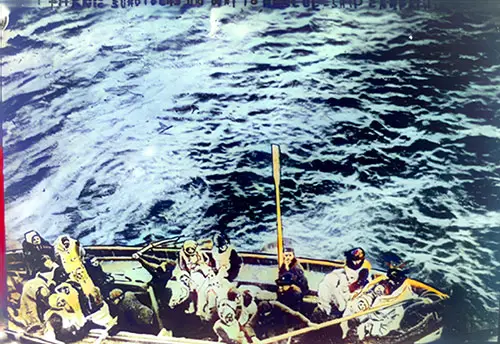
Titanic Lifeboat Crisis: A Visual Account of Survival, Loss, and Lessons Learned
The "RMS Titanic Images – Lifeboats" collection is an extraordinary visual archive that captures the tragic realities of the Titanic disaster, focusing on one of its most infamous failures—the insufficient lifeboats. Featuring historical photographs, newspaper illustrations, and technical diagrams, this collection presents a chilling look at the aftermath of the sinking, the survivors' rescue, and the missed opportunities that could have saved hundreds more lives.
For teachers, students, historians, genealogists, and maritime enthusiasts, this collection offers an unparalleled resource for studying the failures in maritime safety, the social implications of lifeboat access, and the changes that followed the disaster.
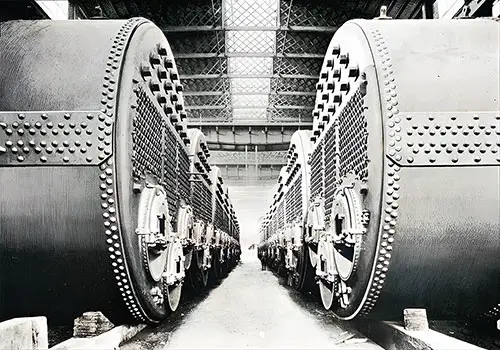
Machinery, Engines, and Equipment on the RMS Titanic: A Look at the Ship’s Cutting-Edge Technology
The RMS Titanic, renowned for its engineering marvels, featured cutting-edge machinery, engines, and equipment designed to make it the most advanced and luxurious ship of its time. The machinery and technology that powered the Titanic, such as the refrigerating systems, watertight doors, and generating plants, were a testament to the peak of industrial progress in the early 20th century. Examining these systems offers invaluable insights into the sophistication of the Titanic’s design and the impact of its technological advancements on ocean travel at the time.
For teachers, students, genealogists, and historians, this collection of images and detailed descriptions highlights the complex and innovative engineering that powered the Titanic. These visuals serve as key resources for exploring the technological landscape of the early 1900s, the role of engineering in maritime safety, and the interplay of luxury and technology aboard one of the most famous ships in history.
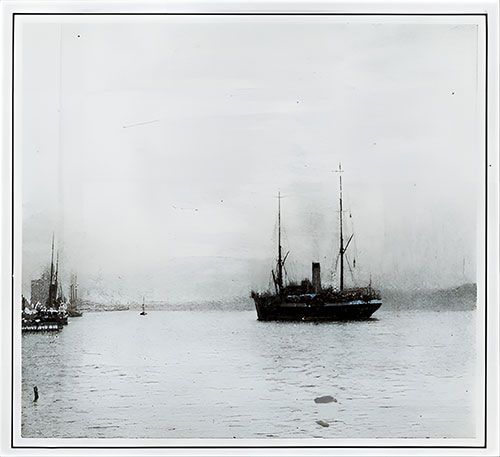
The Mackay-Bennett and the Recovery of Titanic Victims: Scenes of Loss and Mourning in Halifax
The RMS Titanic disaster, one of the most tragic maritime events in history, resulted in the loss of over 1,500 lives. In the aftermath, the Mackay-Bennett, a cable-laying ship, was dispatched to recover the bodies of those who had perished in the disaster. This collection of photographs and scenes from Halifax, where the bodies were brought for identification, offers a stark and poignant look at the aftermath of the Titanic tragedy. These images are not only vital for understanding the human cost of the disaster but also provide a glimpse into the logistical and emotional challenges involved in recovering and identifying the victims.
For teachers, students, genealogists, historians, and others, these photographs provide primary source material that helps in understanding the broader social, emotional, and historical context surrounding the Titanic disaster and its aftermath.
- Memorials
- Miscellaneous
- News (Newspapers, Periodicals, Public Reaction to the Sinking)
- New York
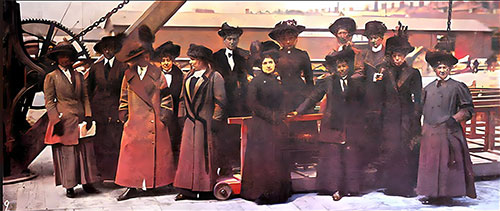
Titanic’s Officers & Crew: The Faces Behind the Disaster
This compelling collection of Titanic officers and crew images offers a rare glimpse into the people who kept the great ship running and ultimately sacrificed their lives in service of its passengers. These images are of historical importance for teachers, students, historians, and genealogists as they provide visual documentation of the ship's leadership, engineering team, stewards, and musicians—all of whom played crucial roles during the tragedy.
Unlike the wealthy first-class passengers who are often at the forefront of Titanic lore, these photographs shine a light on the working-class men and women who lived and died on the ship. This collection is a must-use resource for educators and students exploring maritime history, social hierarchy, and disaster response in ocean travel.
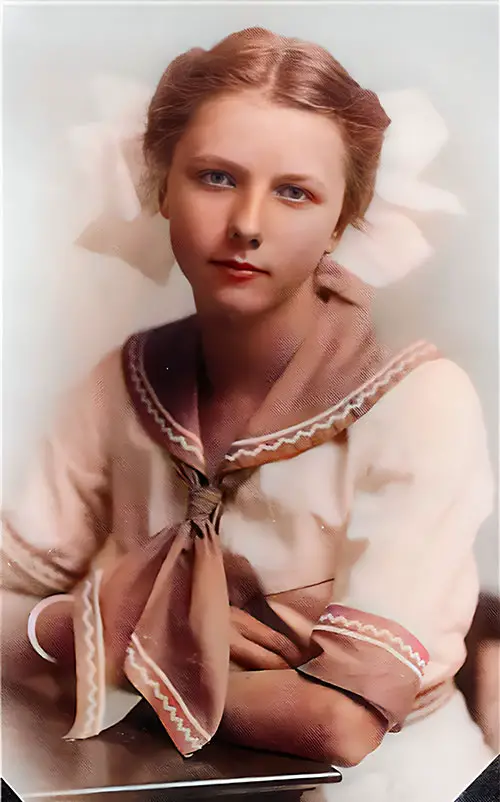
Faces of the Titanic: Survivors, Victims & Crew in Rare Photographs
This extraordinary collection of Titanic passenger images offers an invaluable resource for teachers, students, genealogists, historians, and researchers. The photographs provide a visual narrative of the people aboard the doomed ship—both survivors and victims—capturing their lives before and after the disaster.
For those exploring ocean travel history, social class divisions, and personal stories from the Titanic, this collection is a goldmine of primary source material. The arrangement of images into logical categories enhances accessibility, allowing users to quickly locate relevant individuals and understand the human side of the tragedy.

Titanic Passenger Lists & Manifests: A Complete Record of Those Onboard
This rare and meticulously curated collection of Titanic passenger lists and manifests provides an unparalleled look into the lives of those aboard the ill-fated vessel. For teachers, students, historians, genealogists, and ocean travel enthusiasts, these records offer direct evidence of who sailed on the Titanic, their social standing, and their ultimate fate.
This collection contains official White Star Line passenger lists for first and second-class travelers, as well as British Board of Trade Outward Passenger Manifests, which recorded emigrants traveling from Queenstown to New York on April 11, 1912.
For students writing essays on immigration, maritime history, and class structures, these documents serve as primary source materials, making them essential resources for academic research.
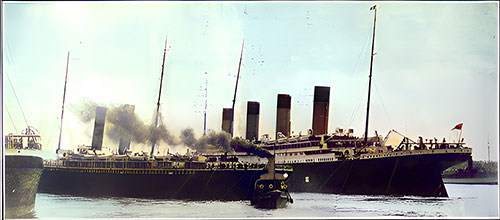
Exterior Views of the RMS Titanic: The Grandeur and Legacy of the World's Largest Ocean Liner
The RMS Titanic, once the epitome of luxury and technological advancement in ocean travel, captured the world’s attention from her inception. The ship's exterior views, as documented through various photographs, illustrations, and newspaper clippings, offer a fascinating glimpse into the grandeur of the Titanic and her ill-fated maiden voyage. These images are not only vital for understanding the Titanic's aesthetic appeal but also for grasping the scale of the ship, her design innovations, and the excitement surrounding her launch and subsequent tragedy.
For teachers, students, genealogists, and historians, these images provide essential primary source material for studying the Titanic from an architectural, historical, and social perspective. They serve as a window into the public perception of the ship before the disaster, offering insights into the luxury and ambition that defined early 20th-century ocean travel.
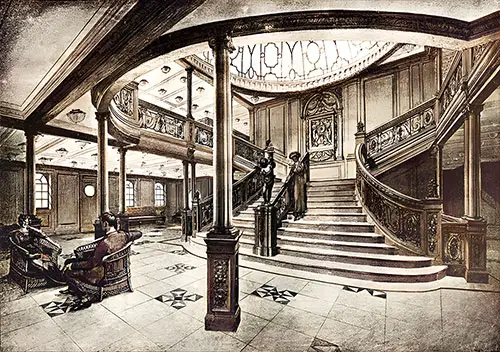
Inside the Titanic: A Rare Look at Its Grand Interior & Luxurious Spaces
This extraordinary collection of Titanic interior images provides an unparalleled look at the ship’s luxurious accommodations. For teachers, students, historians, genealogists, and ocean travel enthusiasts, these photographs offer a glimpse into the grandeur of early 20th-century transatlantic travel.
The Titanic was not just a ship—it was a floating palace, with interiors designed to rival the finest hotels and country estates of Europe. These images showcase the ship’s architectural elegance, first-class opulence, and amenities for all passengers.
For students writing essays on social class, maritime history, or early 20th-century luxury travel, this collection provides primary source material that helps bring history to life.
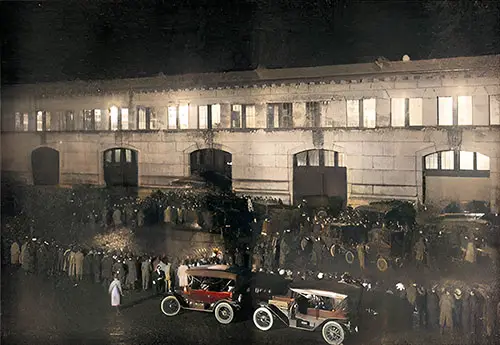
The arrival of Titanic survivors in New York aboard the RMS Carpathia is one of the most poignant moments in the history of ocean travel. On the evening of April 18, 1912, the Carpathia entered New York Harbor, bringing with it 705 survivors of the Titanic disaster, an event that shocked the world. The Titanic, a symbol of early 20th-century technological ambition, met its tragic end after hitting an iceberg during its maiden voyage. The images captured in the aftermath of the Carpathia’s arrival present not only a vivid snapshot of the human experience in the face of catastrophe but also reflect the broader historical and societal contexts of the time.
This collection of photographs and illustrations is crucial for teachers, students, genealogists, and historians alike as it provides rich primary source material for exploring both the emotional and factual elements of the Titanic disaster and its aftermath. The survivors’ arrival in New York offers deep insights into early 20th-century society, maritime practices, and the human stories behind one of the greatest maritime tragedies.
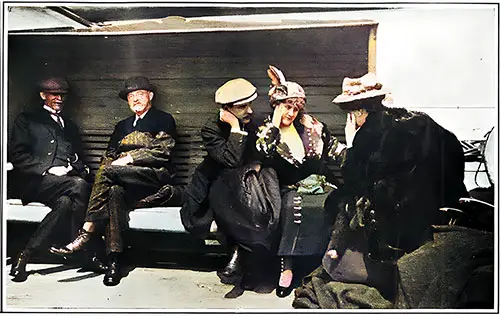
Titanic Survivors Aboard the Carpathia: Photographs and Personal Stories of Resilience
The RMS Titanic’s tragic sinking remains one of the most pivotal moments in the history of ocean travel. The Carpathia, a Cunard Line ship, played a heroic role in rescuing the Titanic's survivors and transporting them to safety. These photographs of the Titanic survivors aboard the Carpathia offer unique insights into the aftermath of one of the deadliest maritime disasters in history. The images not only document the physical rescue but also capture the human emotions and stories of survival, grief, and relief that followed.
For teachers, students, genealogists, historians, and others, this collection of photographs is invaluable for understanding both the historical context and the personal impact of the Titanic disaster. These images provide primary source material that helps in exploring how such a tragedy shaped not only ocean travel but also social norms, safety regulations, and public perception of maritime technology in the early 20th century.
Images Sourced from Books
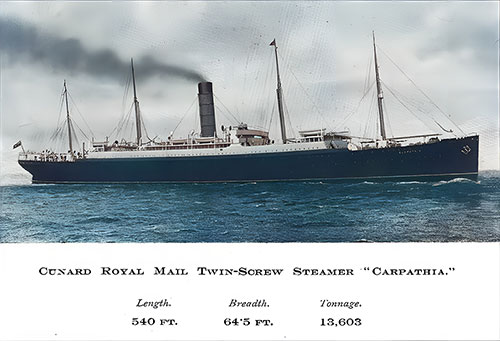
Cunard Line Handbook To the Mediterranean, Adriatic, and The Continent of Europe, published December 1905. The Information comprised in this book had been prepared for the use of passengers traveling by the Cunard Hungarian-American Line from New York to the Mediterranean and Adriatic. The handbook is noteworthy for its many maps of ports of call and for a superb photographs of the Carpathia, rescue ship of the Titanic.
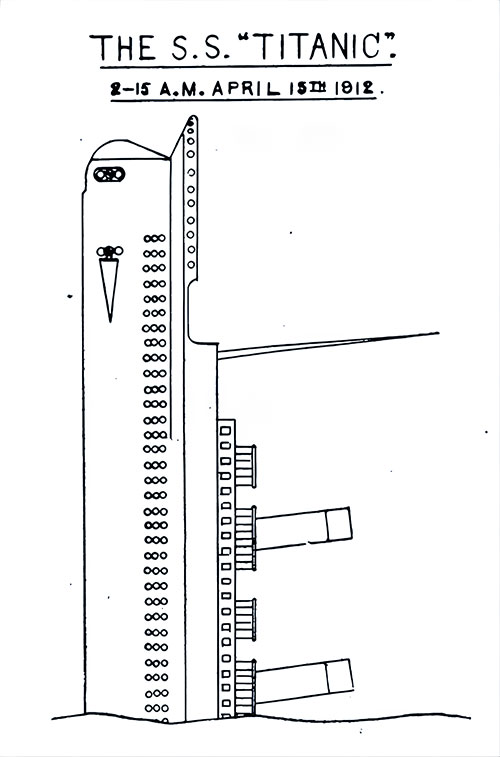
Titanic’s Sinking Reexamined: Engineering Flaws, Pumping Systems, and Salvage Solutions (1915)
Written just three years after the Titanic disaster, How to Save a Big Ship from Sinking (1915) by Charles V. A. Eley presents a compelling analysis of ship safety, emergency protocols, and technical improvements that could prevent future maritime disasters. Unlike earlier Titanic reports focused on human error and lifeboat capacity, this book delves into the engineering flaws that led to the rapid sinking of the Titanic and proposes practical solutions to improve ship stability, water pumping efficiency, and emergency response.
For teachers, students, maritime historians, engineers, and genealogists, this technical yet accessible work offers valuable insight into the lessons learned from the Titanic and how they shaped the future of ocean travel. The detailed diagrams, editorial reviews, and expert opinions make it an indispensable primary source for research and educational projects.
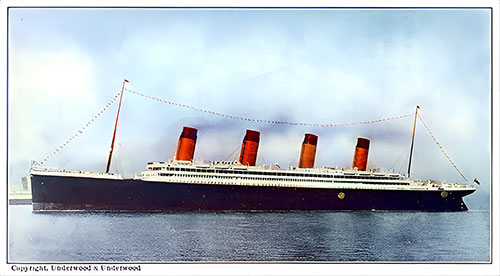
The Loss of the S.S. Titanic (1912)
Learn more about the disaster that befell the Titanic and caused the untimely deaths of 1,517 passengers in this gripping first-hand account from survivor Lawrence Beesley. Originally published a mere nine weeks after one of the most profound maritime disasters in human history, The Loss of the Titanic, written by one of the survivors, shed new light on the tragedy and leveled troubling charges of classism against some of the rescuers.
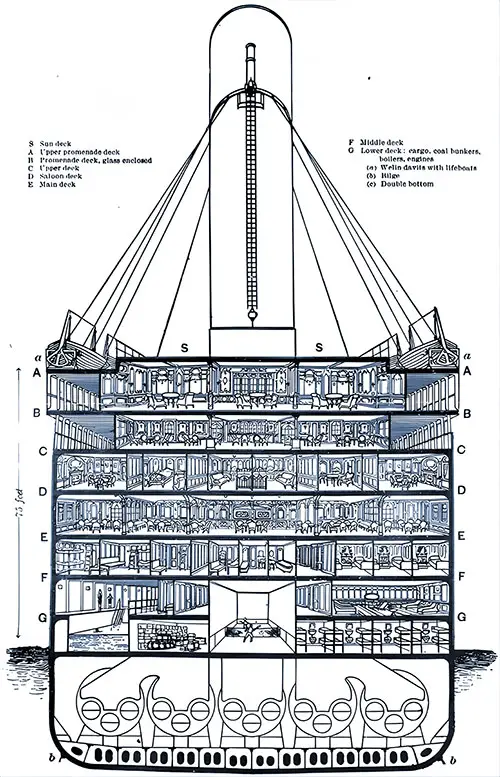
Loss of the Steamship Titanic (1912)
Loss of the steamship "Titanic" ; report of a formal investigation into the circumstances attending the foundering on April 15, 1912, of the British steamship "Titanic", of Liverpool, after striking ice in or near latitude 41 ̊46' N., longitude 50 ̊14' W., North Atlantic Ocean / as conducted by the British government.
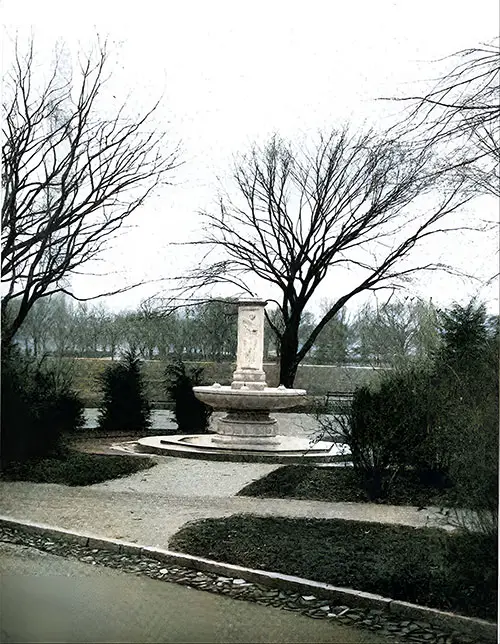
A memorial book to honor the memory of Major Archibald W. Butt and Mr. Francis D. Millet. It has been suggested (And this suggestion has the approval or the president) that an enduring memorial be erected on public grounds in Washington.
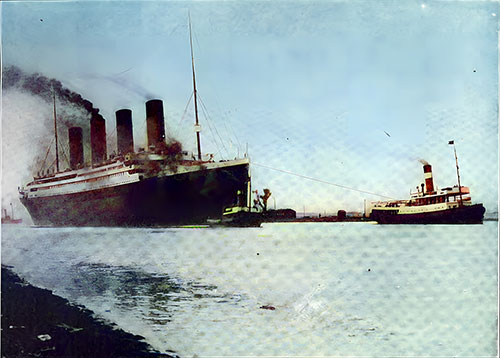
Nelson's Perpetual Loose-Leaf Encyclopaedia. The publishers issue to subscribers twice a year not less than 250 revised pages—in March and in October, thereby making Nelson's Encyclopaedia always new and abreast of the times. Nelson's Contains a complete account of the S.S. Titanic disaster preparared by experts.
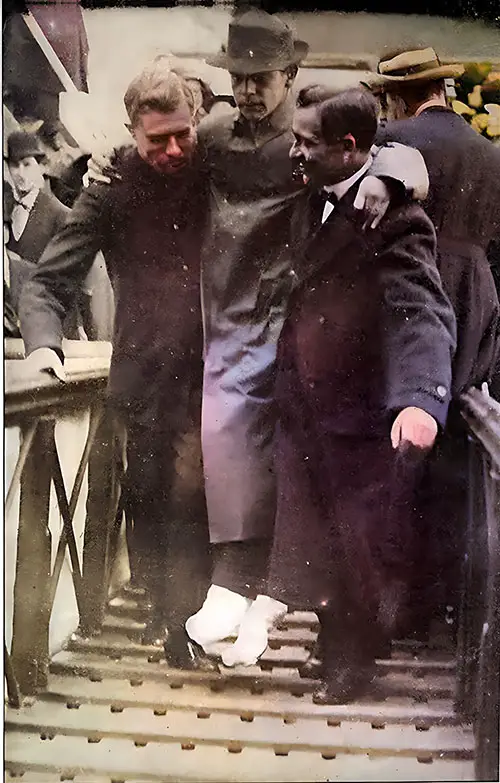
Sinking of the Titanic: Survivor Stories, Heroism, and Maritime Tragedy (1912)
The Sinking of the Titanic: World's Greatest Sea Disaster (1912) provides a graphic and dramatic retelling of one of the greatest maritime disasters in history. This first-hand and journalist-driven account, edited by Thomas H. Russell, captures the thrilling, tragic, and heroic moments of the disaster. The book combines survivor testimonies, descriptions of the Titanic’s grandeur, and expert analysis of maritime dangers, including icebergs and wireless communication.
📖 Why This Book Matters:
Historical Accuracy & Emotional Depth – The book captures real survivor accounts and first-hand reports, bringing the reader into the emotional gravity of the event.
Educational Significance – It provides a valuable primary source for teachers, students, genealogists, and historians, giving insight into early 20th-century maritime safety and journalism.
Richly Illustrated – Featuring photographs, artistic renderings, and diagrams, it helps readers visualize both the Titanic and its tragic end.
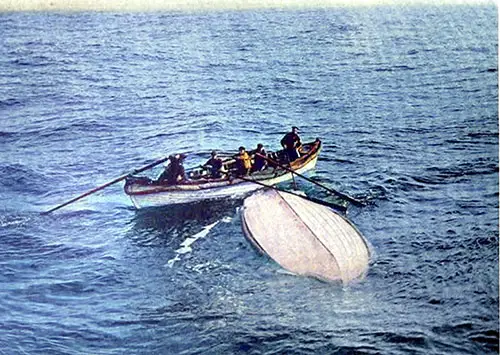
Survivor’s Truth: Archibald Gracie’s Titanic Account & Rare Photographs (1913)
The Truth About the Titanic (1913), authored by Colonel Archibald Gracie, offers one of the most intimate and harrowing survivor accounts of the Titanic disaster. What sets this book apart from other Titanic narratives is its blend of eyewitness testimony and some of the finest photographic documentation of the time.
Gracie, an American historian, soldier, and first-class passenger, survived the disaster but suffered immense physical and emotional trauma, passing away later that same year. His detailed recollections, combined with rare photographs of the Titanic, its passengers, and its tragic aftermath, make this book a cornerstone of Titanic history.
🔹 Why This Collection is Essential for Educators, Historians, and Researchers:
🔹 First-Hand Account from a Survivor – A compelling primary source, offering a connected narrative of events before, during, and after the sinking.
🔹 Unparalleled Photographic Documentation – Features high-quality images of the Titanic, its passengers, officers, and the immediate aftermath of the disaster.
🔹 Valuable for Teachers and Students – Ideal for classroom discussions, research projects, and historical analysis of maritime disasters.
🔹 An Important Resource for Genealogists – Includes rare passenger photos, aiding researchers in tracing Titanic family connections.

Titanic in Focus: Engineering, Safety, and the Lessons of the 1912 Disaster
Published just months after the Titanic disaster, The Unsinkable Titanic: Every Ship Its Own Lifeboat by J. Bernard Walker, editor of Scientific American, was one of the earliest books to analyze the ship’s engineering flaws and advocate for safer shipbuilding practices. Walker’s work was not merely a historical account of the sinking but an urgent call to action, urging the maritime industry to rethink watertight compartments, bulkheads, and lifeboat regulations.
For teachers, students, historians, maritime enthusiasts, and genealogists, this collection of photographs, diagrams, and illustrations offers a powerful glimpse into early 20th-century shipbuilding, safety concerns, and the rapid evolution of ocean travel. This primary source material is invaluable for research papers, historical analysis, and genealogy studies, as it showcases how the Titanic’s legacy shaped modern maritime engineering.
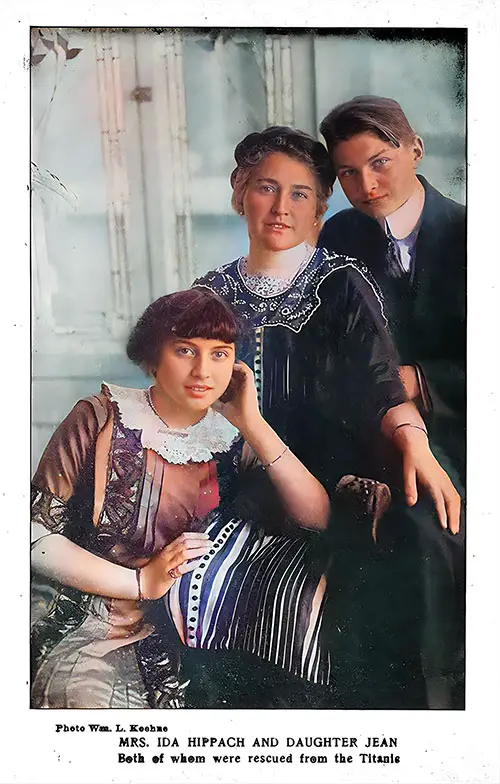
Titanic: A First-Hand Account of Tragedy, Survival, and Maritime Reform (1912)
Wreck and Sinking of the Titanic (1912) is a compelling contemporary account of one of the most infamous maritime tragedies in history. Edited by Marshall Everett, this book provides a graphic and detailed narrative of the Titanic’s maiden voyage, its collision with an iceberg, and the desperate struggle for survival.
🔹 Why This Book Matters:
Historical Authenticity – Published the same year as the disaster, it reflects the raw emotions, real survivor testimonies, and public reaction of the time.
A Resource for Teachers and Historians – This first-hand documentation is invaluable for educators and researchers exploring the Titanic’s impact on maritime law, social class dynamics, and technological advancements.
Illustrated with Photographs, Diagrams, and Political Cartoons – The visual storytelling makes this an engaging read, offering insightful perspectives on the Titanic’s engineering, the rescue efforts, and the aftermath.
Images Sourced from Periodicals
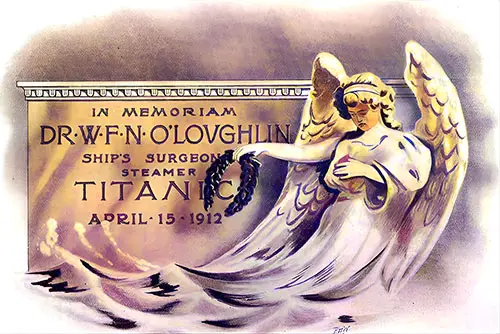
Images pertaining to the Titanic disaster or its aftermath, published in The American Medicine Magazine published by American Medical Publishing Company of Burlington, VT and New York, NY.
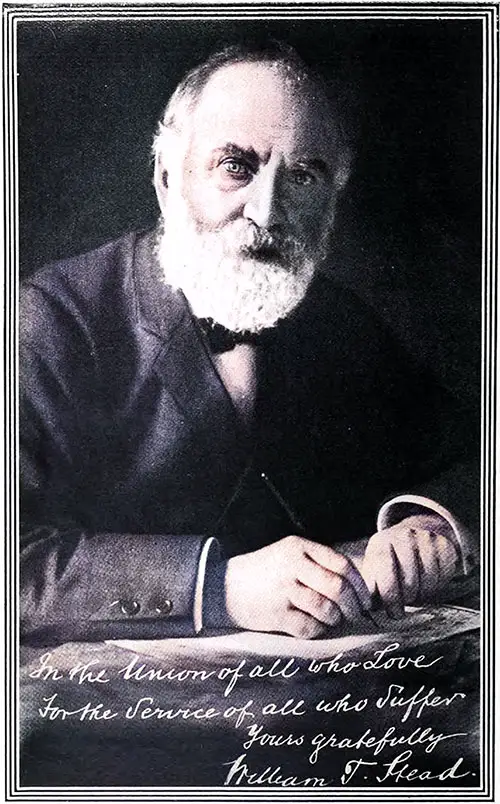
William T. Stead and the Titanic: The Media, Maritime History, and a Tragic Legacy
The American Review of Reviews offers a historically significant collection of images and articles related to the RMS Titanic, with a special focus on William T. Stead, a renowned journalist who perished in the disaster. This article provides a unique intersection of journalism, ocean travel, and history, capturing the Titanic’s grandeur, the tragedy, and its impact on notable figures of the time.
For teachers, students, genealogists, historians, and Titanic enthusiasts, this resource offers a blend of rare photography, insightful commentary, and first-hand perspectives on one of history’s most infamous maritime disasters.
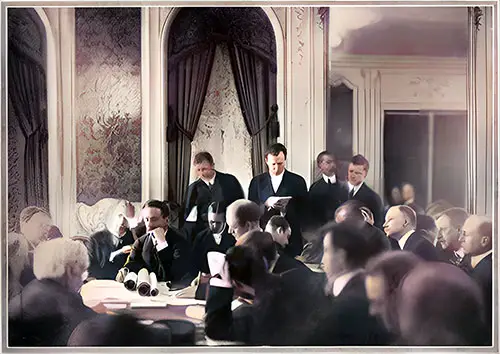
Titanic Survivors, Lifeboats, and Public Response: A Visual Chronicle from Collier’s Magazine
Collier’s Magazine, one of the most widely read periodicals of its time, provides a vivid, photographic account of the Titanic disaster and its aftermath. This collection offers a compelling look at the rescue efforts, survivor experiences, and public response. The photographic evidence presented in this article makes it an invaluable resource for teachers, students, genealogists, and historians studying the Titanic, early 20th-century ocean travel, and maritime safety.
This article captures several critical aspects of the Titanic’s sinking, including the lifeboat evacuations, the arrival of survivors in New York, and the immediate public and governmental reactions to the disaster.
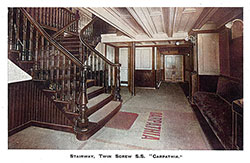
Images pertaining to the Titanic disaster or its aftermath, published in The Cunard Daily Bulletin, published by the Cunard Steamship Company, Ltd., and printed daily aboard their transatlantic liners from the early 1900s to about 1915.

The Daily Graphic, a London morning daily, was launched in 1890, coexisting for 36 years with the sturdy weekly newspaper, The Graphic, that outlived it. It was illustrated with line drawings and woodcuts as photoengraving and halftone was considered too complex a process.
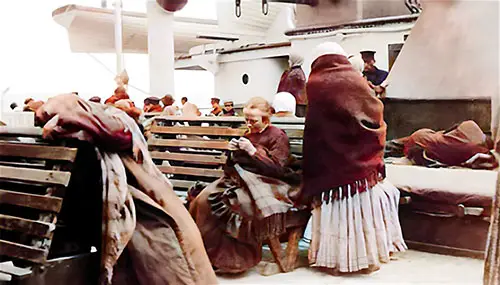
Father Browne’s Titanic Album: A Rare Photographic Journey of the Lost Liner
Father Francis Patrick Mary Browne, an Irish Jesuit priest and amateur photographer, captured some of the most iconic and historically significant photographs of the RMS Titanic before its fateful voyage. As a first-class passenger from Southampton to Queenstown (now Cobh), Ireland, he had a rare opportunity to document life aboard Titanic.
This article and collection of images are an invaluable resource for:
🔹 Teachers and students studying the Titanic’s last moments before the disaster.
🔹 Historians and genealogists seeking firsthand visual documentation of passengers and crew.
🔹 Titanic enthusiasts and maritime researchers examining the ship’s interiors and daily life onboard.
Father Browne’s images offer a unique and deeply personal glimpse into the people, places, and atmosphere aboard the Titanic before its ill-fated journey.
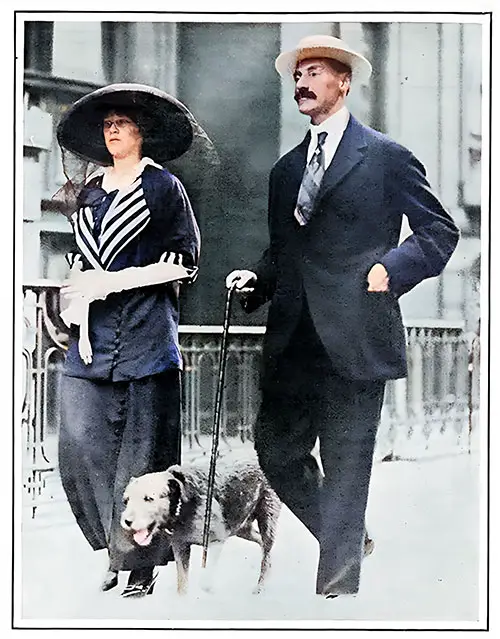
This article provides an extraordinary collection of Titanic images, offering a rare visual journey through the construction, voyage, and aftermath of one of history’s most infamous maritime disasters. The photographs and illustrations serve as critical historical records, allowing modern researchers, students, genealogists, and Titanic enthusiasts to gain firsthand insights into ocean travel in the early 20th century.
This collection is an invaluable resource for:
🔹 Teachers and students exploring Titanic’s engineering, social structure, and tragic demise.
🔹 Historians studying ocean travel, shipbuilding advancements, and maritime safety reforms.
🔹 Genealogists tracing passengers, crew members, and their connections to the Titanic disaster.
By examining high-quality, contemporary images of the Titanic’s voyage, lifeboats, passengers, and Senate inquiry, this article provides an authentic look at Titanic’s enduring legacy.

Images pertaining to the Titanic disaster or its aftermath, published in Ice and Cold Storage: An Illustrated Review of the Ice-Making, Cold Storage, and Refrigerating Industries, was published by Iliffe & Sons of London.
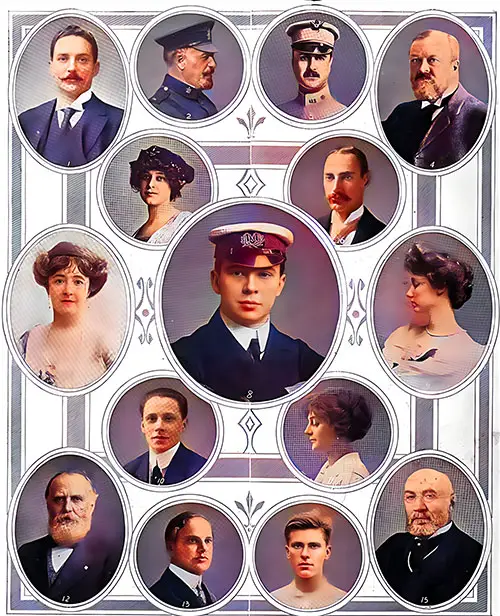
This collection of images and illustrations from The Illustrated London News provides a visually striking and historically valuable record of the Titanic disaster. As the world’s first illustrated weekly news magazine, The Illustrated London News played a crucial role in shaping public perception of major historical events. The images in this article document not just the ship itself, but also the passengers, crew, aftermath, inquiries, and cultural impact, making it an essential resource for teachers, students, genealogists, historians, and Titanic enthusiasts.
For teachers and students, this resource serves as a primary visual document of the tragedy, supporting lessons on maritime history, journalism, and social class structures. Genealogists can explore rare portraits of notable passengers, while historians will appreciate the detailed insights into period fashion, ship design, and emergency response failures.

Focused largely in affairs, both current and otherwise. Prefers articles on any timely subject, especially of a public or political nature. They must have, as a rule, news value.

International Marine Engineering
Images pertaining to the Titanic disaster or its aftermath, published in International Marine Engineering, published monthly in New York by Aldrich Publishing Co., Inc. from 1906 to 1920.

The International Steam Engineer
Images pertaining to the Titanic disaster or its aftermath, published in The International Steam Engineer, Official Journal of the International Union of Steam Engineers, a monthly publication in New York by The Stationary Engineers Publishing Company.
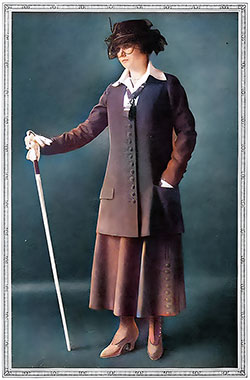
Uses modern short-stories from 2600 to 7500 words, not merely character sketches, but real stories, with the characters revealed and illuminated by action; serials of not more than 40,000 words; a complete novelette in each issue; anecdotes of important people, and jokes, original or clipped, for That Reminds Me Department and Personal pages; groups of photographs that visualize a timely idea, a something new in human achievement.

Titanic in Leslie’s Weekly: A Pictorial Account of Tragedy, Heroism, and Fashion (1912)
Leslie’s Weekly, one of America’s most prominent illustrated news magazines, provides a riveting and deeply emotional portrayal of the Titanic disaster and its aftermath. This collection of images, originally published between April and August 1912, captures both the opulence of the Titanic’s maiden voyage and the sorrowful reality of its tragic fate.
🔹 Why This Collection Matters:
A Primary Source for Teachers, Students, and Historians – Offers contemporary perspectives, including photographs, artistic sketches, and survivor images, making it an invaluable resource for research.
Maritime History and Social Class Reflections – The collection includes Titanic fashion images, showing the elegance of the era, as well as images of well-known passengers and heroes.
A Glimpse Into Early 20th-Century Journalism – The short, sharp storytelling approach of Leslie’s Weekly provides an engaging way to study how media shaped public understanding of the Titanic tragedy.

Titanic in The Literary Digest: A Media Reflection on Tragedy, Reform, and Remembrance (1912)
The Literary Digest, an influential American weekly magazine, captured the public reaction, survivor accounts, and aftermath of the Titanic disaster through photographs, illustrations, and political cartoons. This collection from The Literary Digest provides a powerful, multi-faceted historical account, drawing from newspapers, periodicals, and official reports in the months following the sinking.
🔹 Why This Collection is Significant for Educators, Historians, and Genealogists:
🔹 Comprehensive Coverage – The images document the ship’s final voyage, key figures, political scrutiny, and safety reforms.
🔹 Political Cartoons & Public Response – The editorial cartoons provide a rare insight into public opinion, criticism of maritime practices, and lessons learned.
🔹 Genealogical & Biographical Value – Features notable Titanic passengers, survivors, and rescuers, useful for family researchers.
🔹 Engineering & Safety Reform – Includes diagrams on lifeboat modifications, ship design improvements, and iceberg avoidance strategies.

Titanic: Marine Engineering, Disaster Impact, and Safety Reforms - Marine Review Images
This article, published in Marine Review (May 1912), provides a technical and investigative perspective on the RMS Titanic’s construction, sinking, and aftermath. Unlike other collections focusing on luxury and passenger life, this review is tailored toward shipbuilders, maritime officials, and those involved in ocean travel logistics.
This makes it an exceptional resource for:
🔹 Teachers and students studying the mechanical and engineering aspects of Titanic.
🔹 Historians and maritime enthusiasts analyzing the structural vulnerabilities of Titanic and how they contributed to the disaster.
🔹 Genealogists and researchers interested in the Senate inquiry and ship safety reforms after the tragedy.
By including rare images of Titanic in dry dock, engineering schematics, and key moments from the disaster’s aftermath, this article is a crucial primary source for studying maritime history.
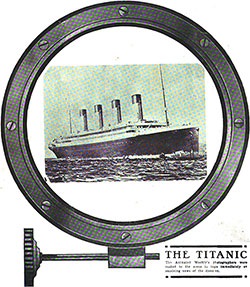
Images pertaining to the Titanic disaster or its aftermath, published in The Moving Picture News, The Motion Picture News was an American film industry trade paper published from 1910 to 1930.

The National Magazine publishes exceptionally striking photographs of extreme current interest, accompanied by descriptions. They are using stories of about 500 or 1500 words, snappy and anecdotal sketches concerning prominent people or men who have been doing things. They also utilize photographs of these people to illustrate the articles.

The Nautical Gazette is a technical journal dealing with ship construction and navigation in general—as a science and a practice. Features articles relating to shipping, shipbuilding, harbors, waterways, etc.
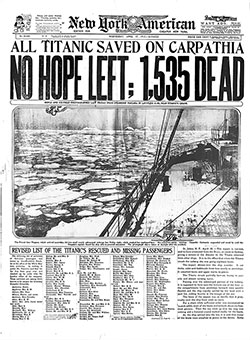
The New York American was a daily paper published by the Star Company from 1902-1937. The GG Archives has the 17 April 1912 issue of this paper that dealt primarily with the Titanic Disaster and its aftermath.

The New York Observer, a Presbyterian weekly included articles traditionally about New York and life in New York City. Includes religious, current news and political articles.

Outlook Magazine uses photographs relating to current events in their pictorial department and occasionally use pictures to illustrate articles, generally supplied by the author.

Popular Mechancis focuses on new developments in the field of science, mechanics, industry, invention and discovery — accurate facts accompanied by sharp photos showing the features.
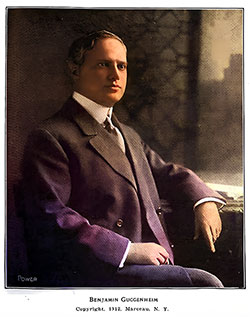
Power - Devoted to the Generation and Transmission of Power, Published New York: Hill Publishing Company. Coverage of the story of the Titanic from 1911 during its construction through the aftermath of the disaster in 1912.

Public Domain Images in the United States Sourced from Public Domain Image Sites, Wikipedia, and others, having explicit denotation of no longer being under copyright.
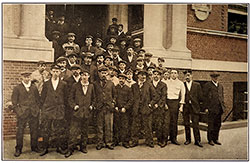
A good magazine for the advancement of seamen in the Mercantile Marine that presents a general view of the seaman's cause, commending it earnestly to the sympathies, the prayers, and the benefactions of all Christian people.

The Scientific American is not a technical journal. It is a journal that simplifies science. It tells its readers about everything taking place in electrical, mechanical and civil engineering; aviation, steamship, railroad and general transportation; chemistry, foodstuffs, and natural history; new ideas and inventions; and so on.

One of the most important American illustrated literary magazines. It speaks to an intellectual audience and its fiction and articles must be strictly high-class. One of the chief markets for the informed travel article, written by an explorer of repute, naturalist of reputation, or the like—if illustrated by the author or by members of the same expedition, all the better.

Describes the various uses to which electricity is put on board the two latest White Star Liners, the Olympic and Titanic. These include, besides lighting, powere for winches, cranes, fans, water-tight doors, and stoking and helm indicators. The cooling and heating equipment are also electrically worked, while a complete telephone and wireless installation is to be found on board. The differences between marine and land practice are noted.
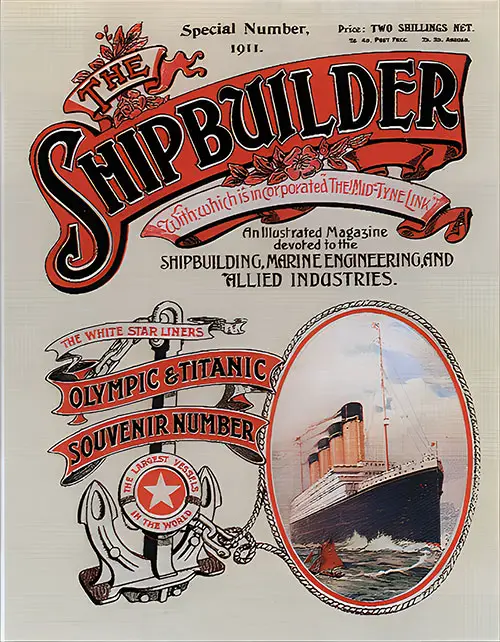
Titanic’s Engineering Origins: The White Star Line and the Making of a Maritime Giant
Unlike many Titanic-related historical materials that focus on the disaster itself, The Shipbuilder’s 1911 special issue provides a fascinating pre-tragedy perspective on Titanic and Olympic as engineering marvels. This issue covers the shipbuilding process, technical advancements, and White Star’s design philosophy, making it an invaluable resource for educators, students, maritime historians, and genealogists.
This publication offers an inside look at how these legendary ships were constructed, their advanced technology, and the vision behind them—long before Titanic's fateful voyage.
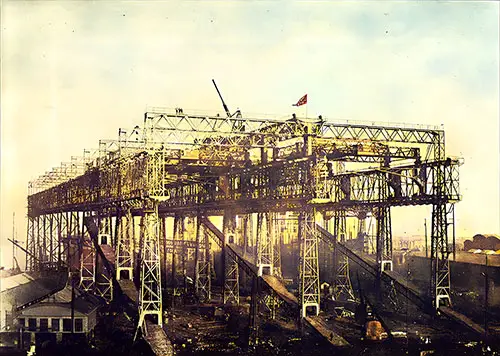
Harland & Wolff: The Shipyard That Built Titanic – Engineering, Design, and Shipbuilding Innovations
This section of The Shipbuilder’s 1911 special issue focuses on Harland & Wolff, the legendary Belfast-based shipbuilders responsible for constructing the RMS Olympic and RMS Titanic. Unlike other shipyards, Harland & Wolff took an all-encompassing approach, overseeing not just hull construction but also propelling machinery and outfitting work. This article is an essential resource for maritime historians, students of engineering, and genealogists researching shipbuilding heritage.
From detailed technical illustrations to insights into shipyard operations, engineering challenges, and the influence of infrastructure on ship design, this publication sheds light on the industrial prowess that brought Titanic to life—long before her tragic fate.
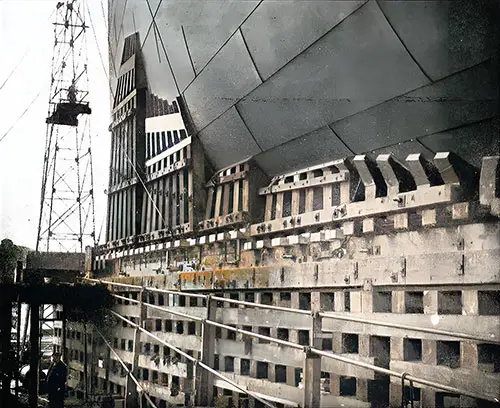
This section of The Shipbuilder’s 1911 special issue focuses on the construction of Titanic and Olympic’s hulls, one of the most critical and complex aspects of shipbuilding. The hull—the skeletal and protective body of the ship—was engineered for strength, stability, and efficiency, making it one of the most advanced maritime structures of its time.
For historians, students, genealogists, and maritime enthusiasts, this article offers detailed technical insights, blueprints, and rare photographs documenting the birth of these legendary ships. With over three million rivets, a sophisticated stern design, and watertight doors that were considered state-of-the-art in 1911, Titanic’s construction represented a new era in ocean travel—though, tragically, one that would soon be tested in ways never anticipated.

This section of The Shipbuilder (1911) provides a detailed exploration of Titanic’s advanced propulsion system, highlighting the ingenious combination of reciprocating engines and a Parsons low-pressure turbine. This hybrid setup offered greater fuel efficiency, higher power output, and improved steam economy, marking a major advancement in marine engineering.
For teachers, students, historians, maritime enthusiasts, and genealogists, this article provides rich technical insights and historical context on Titanic’s engineering design. The accompanying illustrations and photographs offer a rare look at the ship's boilers, turbines, and engine room, making this section invaluable for those studying early 20th-century shipbuilding and maritime history.
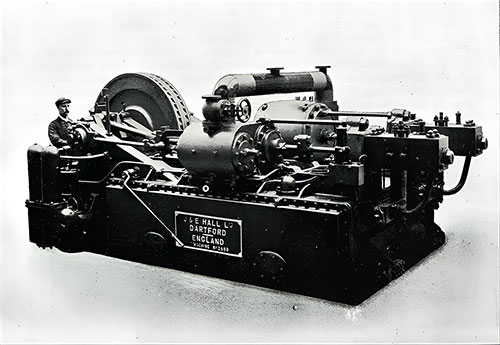
The Titanic and her sister ship, Olympic, were not just maritime engineering marvels; they were floating cities equipped with some of the most advanced refrigeration systems of their time. This section of The Shipbuilder (1911) provides an in-depth look at Titanic’s refrigeration system, which ensured that passengers and crew had access to fresh food, beverages, and cargo storage for long transatlantic voyages.
For teachers, students, maritime historians, genealogists, and ocean travel enthusiasts, this section provides a fascinating glimpse into how refrigeration transformed ocean liners into self-sufficient floating hotels. The technology behind cold storage and ice-making was cutting-edge for 1911, and this article showcases how it worked in remarkable detail.

The Titanic and its sister ship, Olympic, were not just ocean liners—they were the pinnacle of luxury, innovation, and comfort for passengers of all classes. This section of The Shipbuilder (1911) provides a detailed, firsthand look at the ship’s opulent first-class accommodations, spacious second-class quarters, and vastly improved third-class areas.
For teachers, students, genealogists, historians, and maritime enthusiasts, this article offers a unique and valuable insight into the ship’s design, social class distinctions, and the evolution of transatlantic passenger travel. The photographs, deck plans, and intricate descriptions of the ship’s lavish interiors make it an indispensable resource for research, essays, and historical analysis.
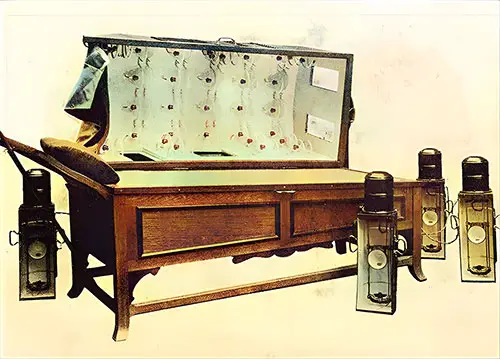
Titanic’s Electrical Marvel: The Power, Lights, and Innovation That Made a Ship a Floating City
Electricity was the lifeblood of the Titanic, transforming it from just another ocean liner into a marvel of modern engineering. This section of The Shipbuilder (1911) gives an in-depth look at the ship’s vast electrical system, covering lighting, power generation, heating, cargo handling, communication, and even luxury features like electric elevators and baths.
For teachers, students, genealogists, historians, and maritime enthusiasts, this article offers a rare and comprehensive look into how electricity powered nearly every function aboard the Titanic. With detailed diagrams, images of dynamos, electric cranes, telephones, and Marconi wireless equipment, it is an indispensable resource for research and historical analysis.

Titanic’s Working Arrangements: Steering, Safety, and Crew Operations on a Floating City
The Titanic was not just an ocean liner—it was a floating city with a complex operational infrastructure. This section of The Shipbuilder (1911) provides a fascinating deep dive into the working arrangements aboard the Titanic and her sister ship, the Olympic. Covering navigation, steering, crew accommodations, cargo handling, lifeboat arrangements, and submarine signaling, this article showcases the intricate planning and technological innovations that went into managing one of the most advanced ships of its time.
For teachers, students, genealogists, and historians, this section is essential for understanding Titanic’s daily operations and how her crew managed everything from cargo loading to steering the ship through the North Atlantic. With detailed descriptions of the Titanic’s steering gear, lifeboat davits, crew quarters, cargo storage, and navigating bridge, this article brings the ship’s inner workings to life.
![]()
Olympic’s Sea Trials & Maiden Voyage: Engineering, Performance, and Legacy of Titanic’s Sister Ship
The Olympic sea trials and maiden voyage represent a pivotal chapter in maritime history. This section of The Shipbuilder (1911) provides an in-depth account of the testing, performance, and early service of the Titanic's sister ship, the Olympic. It offers valuable insights into the engineering, logistics, and operational aspects of one of the largest and most advanced ships of the time.
For teachers, students, genealogists, and historians, this article serves as a critical primary source for studying the development of transatlantic liners, the White Star Line’s ambitions, and the maritime technology of the early 20th century. The Olympic’s trials foreshadow the Titanic’s journey, making this an essential resource for understanding the era’s engineering triumphs and shortcomings.

Blueprints of Titanic: Deck Plans, Engineering Marvels, and Class Divisions
This section of The Shipbuilder (1911) provides a rare and detailed look at the architectural and engineering design of the RMS Titanic and Olympic. It features comprehensive deck plans, sectional views, and engine room elevations, making it an invaluable resource for those studying ocean travel, shipbuilding, and the early 20th-century passenger experience.
For teachers, students, genealogists, and maritime historians, these meticulous diagrams and technical details offer unparalleled insight into the construction and function of these legendary ocean liners. This blueprint of Titanic's design is essential for understanding how the ship was structured, where passengers and crew lived and worked, and how its layout played a role in the ship's tragic fate.
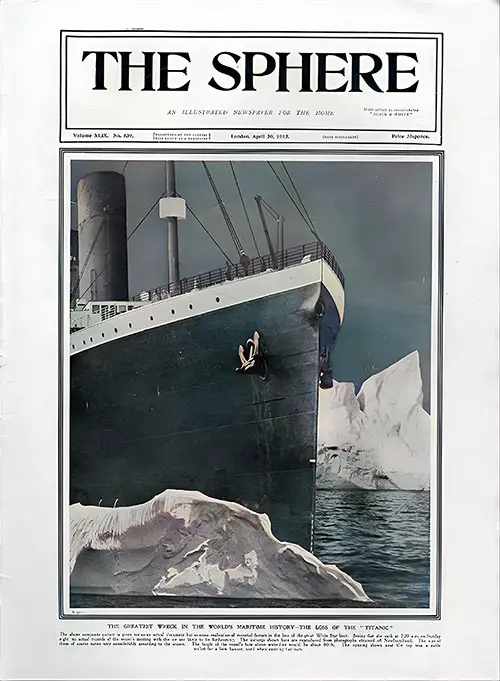
Titanic: A Visual Chronicle from The Sphere – Illustrations, Diagrams & Survivor Accounts from 1912
The Titanic Images - The Sphere compilation presents an extraordinary collection of historical illustrations, diagrams, and photographs from The Sphere, a British illustrated newspaper, documenting the aftermath of the RMS Titanic disaster. Published in April and May 1912, these images provide a contemporary perspective on the tragedy through detailed visual storytelling, making it a valuable resource for teachers, students, historians, genealogists, and Titanic enthusiasts.
Unlike many modern narratives that rely on hindsight, The Sphere offers real-time artistic interpretations and documented accounts, allowing researchers to step into the minds of early 20th-century journalists and artists grappling with the magnitude of the event.

British trade magazine with substantive articles on the ships and shipping industry, known for their excellence in reporting and production. Covers construction, ship tonnage, and fleets, maritime law, steamship passenger and freight companies, and more.

Technical World Magazine is not a dry journal of scientific lore, but a modern, up-to-date, intensely interesting monthly, full of snap and ginger, and blood warming tales of the big things that men are doing everywhere.

The Universal Engineer Magazine
The Universal Engineer was the official publication of the Universal Craftsmen Council of Engineers of the World. The organization includes Engineers, Electricians, Plumbers and Steam Fitters, Woodworkers, Printing Trades, and Sheet Metal Workers. The focus of the magazine are the Engineers, Electricians, Plumbers, and Woodworkers.

The World To-day: A Monthly Record of Human Progress started out to be a current encyclopedia, embodies with its original idea many important literary features. Its pictures are valuable for their variety and peculiar distinctness.
Other Sources

Cover images from the many Titanic books in the GG Archives Library that help to illustrate how the vast amount of literature including both scholarly and popular sources to form a fully comprehensive discussion of the ship, disaster, and aftermath of the Titanic.

Charts and Graphs created by the GG Archives to provide graphical insight to much of the hard data that is so prevalent in telling the story of the Titanic. Most were developed using Microsoft Excel.
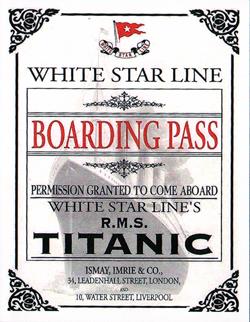
Memorabilia, collectibles, and ephemera are terms often used interchangeably. The appeal of individual pieces lies in their design quality or their significance to a historically significant event, and in the case of the Titanic, a combination of the two conditions.

Titanic Images from the Library of Congress: A Visual Record of the Disaster, Rescue & Aftermath
The Titanic Images – Library of Congress collection is a remarkable visual archive that documents one of the most infamous maritime disasters in history. It offers an unparalleled glimpse into the tragedy, rescue efforts, and aftermath of the sinking of the RMS Titanic on April 15, 1912.
For teachers, students, historians, genealogists, and maritime enthusiasts, this collection provides historically significant photographs and documents that bring the Titanic's story to life. The images featured in this archive are not just photographs—they are moments frozen in time that tell the story of courage, loss, and survival.
From lifeboats carrying survivors to Captain Rostron and the heroic crew of the Carpathia, from Titanic’s interior luxury to the Senate Hearings that followed the disaster, this collection offers one of the most comprehensive visual records of the Titanic tragedy available today.

Magazines and Other Periodical Covers
Cover images from the many Titanic magazine and newspapers in the GG Archives Library that help to illustrate how the vast amount of literature including both scholarly and popular sources to form a fully comprehensive discussion of the ship, disaster, and aftermath of the Titanic.

Artificial collection of images pertaining to the RMS Titanic from newspaper sources where only a few photos are drawn. They are unordered but searchable using the GG Image ID or other terms.

The British Board of Trade Outward Passenger Lists, 1890-1960, recorded the names of people leaving from UK ports for destinations outside of Europe. While outbound passenger lists before 1890 have not survived, this collection still covers decades of peak emigration. It includes not only British citizens but also others who traveled through the UK on their way to other destinations.
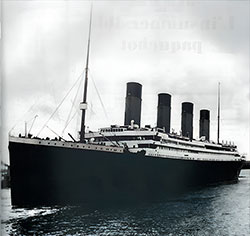
Unknown or Unidentified Sources
Photographs about the Titanic disaster where the photographer or the attributable source is unknown or has not been determined.
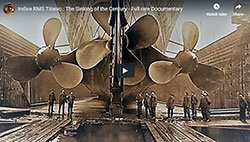
These Film Stills (AKA Publicity Still or Production Still) are photographs of a scene in the Video. They are meant to illustrate one shot during the film and not intended to represent the content of the entire movie. Included in this series are the Hero Images from the Video, shown during setup.

Graphics produced by the White Star Line, the Oceanic Steam Navigation Company and the J. P. Morgan Steamship Trust.
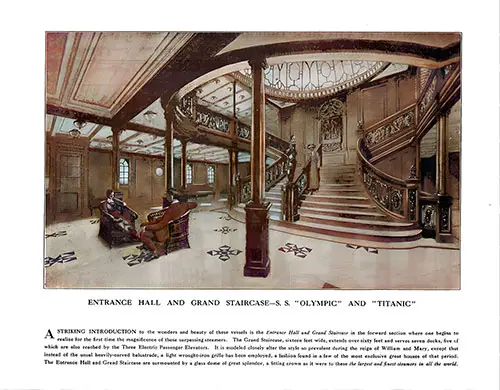
Titanic's Grand Vision: The 1911 White Star Line Brochure for Olympic & Titanic
This 1911 White Star Line promotional brochure presents the RMS Olympic and RMS Titanic as the pinnacle of transatlantic travel, boasting opulence, grandeur, and cutting-edge design. Unlike modern advertising, this brochure is a work of art, relying on lavish illustrations rather than photography, which adds to the romanticized vision of these “unsinkable” ocean liners.
For teachers, students, historians, and genealogists, this document is a valuable primary source that captures how the Titanic was marketed to prospective travelers. It offers insights into Edwardian-era luxury, social hierarchy, and maritime advancements, making it an ideal resource for essays, research projects, and historical analysis.

